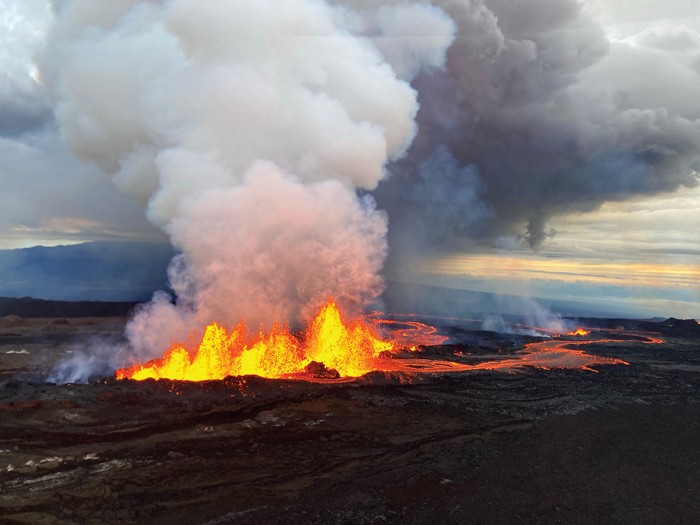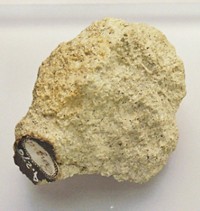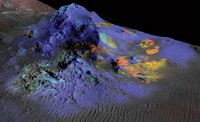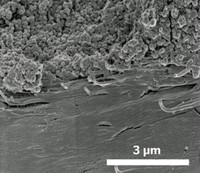Advertisement
Grab your lab coat. Let's get started
Welcome!
Welcome!
Create an account below to get 6 C&EN articles per month, receive newsletters and more - all free.
It seems this is your first time logging in online. Please enter the following information to continue.
As an ACS member you automatically get access to this site. All we need is few more details to create your reading experience.
Not you? Sign in with a different account.
Not you? Sign in with a different account.
ERROR 1
ERROR 1
ERROR 2
ERROR 2
ERROR 2
ERROR 2
ERROR 2
Password and Confirm password must match.
If you have an ACS member number, please enter it here so we can link this account to your membership. (optional)
ERROR 2
ACS values your privacy. By submitting your information, you are gaining access to C&EN and subscribing to our weekly newsletter. We use the information you provide to make your reading experience better, and we will never sell your data to third party members.
Geochemistry
Pele’s hairs can provide insight into the Mauna Loa eruption
Hair-like glass filaments produced by the Hawaiian volcano can help geochemists learn more about the lava’s chemistry
by Krystal Vasquez
December 8, 2022

On Nov. 27, Hawaii’s Mauna Loa volcano reawakened, spewing lava from its summit for the first time in 38 years. Fifteen minutes later, the Hawaiian Volcano Observatory sent out a notice, reassuring nearby communities that they were safe from the flowing molten rock.
But officials note that there are other potential hazards that local residents need to keep in mind during the eruption. The highly fluid, basaltic lavas produced from volcanoes like Mauna Loa can also create amber-colored strands of volcanic glass known as Pele’s hair. These thin filaments, named after the Hawaiian deity Pele, form when lava splatters and gets stretched by the wind, “sort of like a taffy pull,” explains Aaron Pietruszka, a geochemist at the University of Hawaii at Manoa. As of Dec. 7, the US Geological Survey reports that Pele’s hair is being found as far as 60 km from Mauna Loa’s Northeast Rift Zone, the area responsible for the majority of the volcano’s activity.
As the fragile glass strands are lofted into the air, they can splinter, forming sharp slivers that can irritate human skin, eyes, and lungs. But the volcanic glass only poses a risk in large quantities, says Kendra Lynn, a volcanologist at the Hawaiian Volcano Observatory. Finding a few clumps of Pele’s hair on the ground poses “an incredibly low risk situation,” she says. “The worst thing to do would be to stir up really fine fragments of this stuff into the air because then you might inhale some of it.”

Even though Pele’s hair may be a nuisance for people living under the shadow of Mauna Loa, it can also double as an invaluable tool for geochemists seeking to understand the current eruption. “Pele’s hair, Pele’s tears, and really any type of lava that comes out of the vent—all of that is useful to understand lava chemistry,” Pietruszka says. Pele’s tears are similar to Pele’s hair but take the form of teardrop-shaped blobs as opposed to long, thin strands.
For example, Lynn explains that scientists can measure the amount of calcium and magnesium in the filaments to calculate the lava’s temperature, which can indicate whether hot, fresh magma is feeding the system. “Hotter erupting lava flows farther faster,” Lynn says, “which you can imagine matters a lot [when] thinking about hazards.”
Chemical analysis of Pele’s hair and other volcanic glass can also allow scientists to peek into the inner workings of a volcano. Because the hair is formed by rapidly cooled lava, it provides a snapshot of the lava’s composition mere seconds after it exits the ground. Researchers can then use a variety of analytical techniques, such as mass spectrometry, to extract this elemental data, which they can use to deduce where the magma came from and how it was formed in the Earth’s mantle.
“Once we know how the magma is kind of connected and how it’s interacting and how it might move, we can better understand what might happen in the future,” Pietruszka says.
Lynn agrees. Although the hairs are small and sometimes hard to spot, “once you find them, they really are quite valuable in understanding the volcano.”





Join the conversation
Contact the reporter
Submit a Letter to the Editor for publication
Engage with us on Twitter